Aloha, 2017: Saddle Road completion, TMT saga among year’s top Tribune-Herald stories
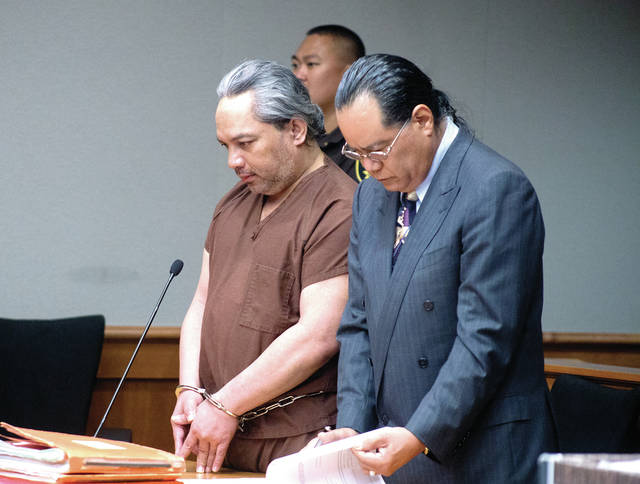
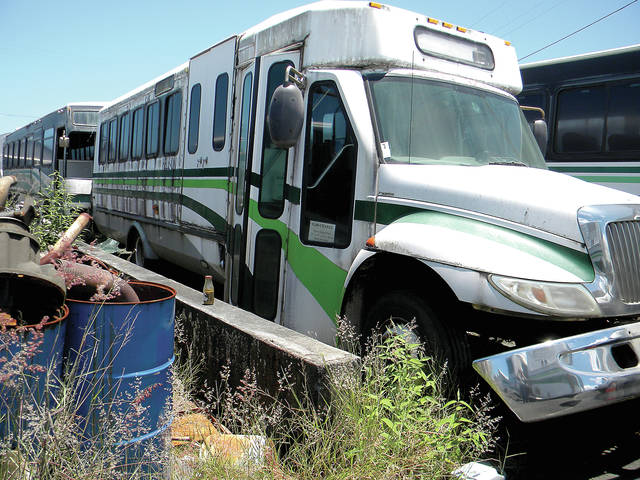
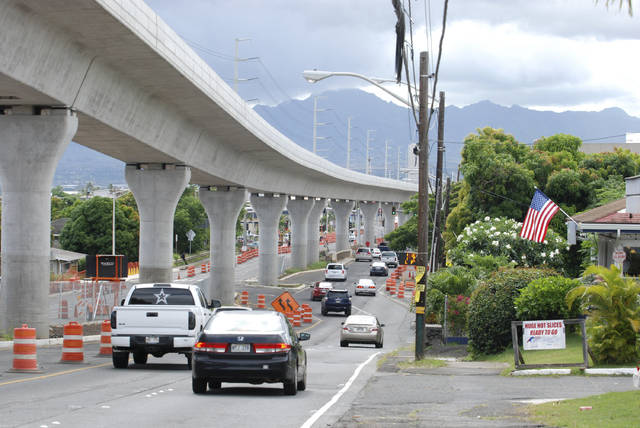
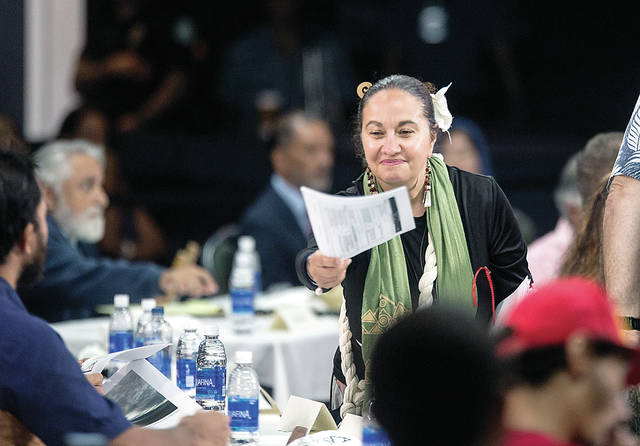
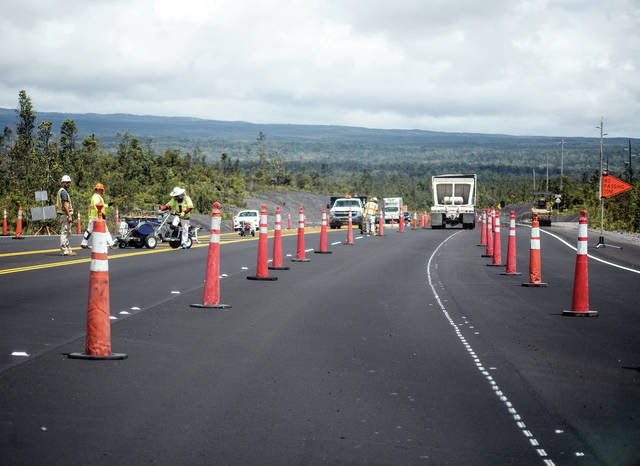
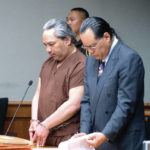




As we ring out 2017 and ring in 2018, it’s likely the past year will be remembered for the phrases “fake news” and “me too.”
As we ring out 2017 and ring in 2018, it’s likely the past year will be remembered for the phrases “fake news” and “me too.”
With less than a year in office, President Donald Trump’s administration has faced lawsuits on multiple versions of a proposed travel ban to the U.S. from several predominately Muslim Middle East countries; is currently under a special prosecutor’s investigation into his election campaign’s ties to Russia; and who continues his war of words — usually via Twitter — with opponents and what he calls the fake news media, led by The New York Times, Washington Post and CNN.
ADVERTISING
A number of rich, powerful, famous and influential men have been brought down this year by allegations of sexual harassment, sexual assault and otherwise inappropriate sexual behavior. A short list of power players accused in 2017 of alleged sexual misconduct include: Hollywood producer Harvey Weinstein; TV newsmen Matt Lauer and Charlie Rose; U.S. Sen. Al Franken; U.S. Reps. John Conyers Jr. and Trent Franks; hip-hop mogul Russell Simmons; “A Prairie Home Companion” creator and former host Garrison Keillor; actors Kevin Spacey and Danny Masterson; comedians Louis C.K. and Andy Dick; and celebrity chefs Mario Batali, John Besh and Johnny Iuzzini.
Numerous women also have come forward to accuse Trump of sexual impropriety. That should come as little surprise. Trump was elected, despite a decade-old audio recording released during the campaign of Trump admitting to a TV host his celebrity status allowed him to grope women with impunity, and a confession by Trump to radio shock jock Howard Stern that he would walk unannounced into changing rooms of beauty pageants he owned to view contestants naked.
During this news cycle involving the sexual misconduct allegations, social media has seen multitudes of posts saying simply “me too.” The phrase has long been a hashtag used by social activist Tarana Burke, but caught mainstream traction recently when actress Alyssa Milano encouraged victims of sexual assault to post the phrase on social media.
Closer to home, we’ve seen the continuing trend of heritage businesses here either close their doors or change hands, including Puueo Poi, Itsu’s Fishing Supplies and Kow’s Restaurant.
We’ve also bid aloha to a number of prominent island residents who died in 2017. They include: Rex Matsuno, retired Suisan president whose innovation helped expand Hilo’s fish market into the island’s largest broadline food distributor; Shunichi Kimura, former Hilo circuit judge and Hawaii County mayor; Moanike‘ala Akaka, former Office of Hawaiian Affairs trustee and Hawaiian activist; George Yokoyama, former Hawaii County Economic Opportunity Council executive director and political kingmaker; Walter “Waltah” Pacheco, a Hilo pidgin radio personality whose listenership spanned generations; Fred Koehnen, businessman and community leader and second generation of F. Koehnen Ltd.; Lesley Hill, agricultural leader and owner of Paradise Plants; Jackie Pung, LPGA tour pioneer and “Hawaii’s First Lady of Golf”; Elson “Bobo” Brown, the last remaining member of the Hilo Hawaiians musical group; and Randy Hongo, who with wife, Gay, ministered through music worldwide.
Without further ado, it’s time to recap the Top 10 Hawaii Island stories in 2017, as chosen by the editorial staff of the Tribune-Herald:
1. Saddle up
Dedication took place Oct. 10 to celebrate the completion of the final phase of improvements to the Daniel K. Inouye Highway, better known as Saddle Road, connecting the existing highway near the 11-mile marker to the west end of the Puainako Street extension in Hilo.
“This was no small undertaking. … We’re talking about 48 miles of World War II-era roads to modern safety standards,” Gov. David Ige told the assembled government officials and community members.
At $57 million, the final phase came in within budget, bringing the total cost of modernizing the road — originally built in 1942 as a one-lane thoroughfare to connect military training facilities — to $316.5 million.
The improvements along the entire Saddle Road have cut cross-island travel time significantly and increased the number of daily vehicles that use the road for commuting by 250 percent since 2012, officials said Tuesday. The number of accidents on the Saddle also has dropped 80 percent in that same time frame.
The Army contributed more than $100 million for the federal- and state-funded project.
2. Still wait and see for TMT
Retired judge Riki May Amano in July gave a positive recommendation for construction of the Thirty Meter Telescope on Maunakea after a lengthy quasi-judicial hearing. The state Land Board in September approved a construction permit for the $1.4 billion observatory project. And in late October, opponents of the long-delayed next-generation telescope filed an appeal of that approval in the state Supreme Court, saying its construction will desecrate land some Native Hawaiians consider sacred.
Also in the Supreme Court is the state’s appeal of a ruling by Hilo Circuit Judge Greg Nakamura that the Land Board should have granted a contested case hearing to Native Hawaiian cultural practitioner E. Kalani Flores before approving a sublease by the University of Hawaii at Hilo to TMT for 6 acres on the mountain.
Meanwhile, Mayor Harry Kim continues to float the idea of making Maunakea a monument to peace, to include TMT, and has the backing of Gov. David Ige. The idea hasn’t caught on with opponents of the telescope, however.
“(I)f the peace park includes TMT, we have no idea how it could be possible to be construed as a peace park,” said Kealoha Pisciotta, a party to the Supreme Court appeal of TMT’s construction permit.
In the meantime, TMT International Observatory, the nonprofit organization behind the long-delayed project, has set an April 2018 deadline for deciding whether to build in Hawaii or in the Canary Islands.
3. Railroaded
A five-day special session of the state Legislature in late August and early September resulted in a 1 percent transient accommodations tax hike on all islands to fund a $2.4 billion bailout of an overbudget Honolulu rail project.
All four Big Island senators voted no, as did Big Island Reps. Richard Creagan, Cindy Evans Nicole Lowen and Chris Todd. Voting yes were Reps. Mark Nakashima, Richard Onishi and Joy San Buenaventura, although Onishi and San Buenaventura said they had reservations.
The measure was enacted after the cost of the less-than-half-completed commuter line skyrocketed from $5.26 billion in late 2014 to $9.5 billion.
Sen. Russell Ruderman, a Puna Democrat, described his district as “99 percent opposed to it, and vehemently.”
“It’s being railroaded, pardon the pun,” Ruderman said. “This bill was crafted behind closed doors and handed to us, with a ‘take it or leave it, and by the way, you’ll take it.’”
4. Sticky POI
County Human Resources Director Sharon Toriano resigned in late September after an audit showed “questionable hiring practices” and after a newspaper article revealed preferential treatment of job applicants through the use of sticky notes attached to official hiring documents.
Toriano acknowledged she put a sticky note designating an individual as a “POI” — short for “person of interest” — for a $40,000-a-year Parks and Recreation van driver position, but told a reporter she didn’t remember why a POI was designated for that job.
The report by Legislative Auditor Bonnie Nims didn’t mention POI, but was critical about how the county solicited and hired employees.
Toriano announced her resignation to the Merit Appeals Board, which had the audit and Toriano’s annual performance evaluation on the agenda for its September meeting.
She was placed on paid sick leave in her $99,000-a-year position until the effective date of her resignation, Dec. 31.
5. Justice for Peter Boy?
Peter Kema Sr. was sentenced in July to 20 years in prison for the 1997 death of his 6-year-old son, Peter Kema Jr., also known as “Peter Boy.”
Peter Boy, who was chronically abused almost from birth, was missing for almost two decades before his parents, Kema Sr. and Jaylin Kema, were indicted for the boy’s death.
Jaylin Kema eventually pleaded guilty to manslaughter and told the court her son died from an infection caused by physical abuse from Kema Sr. and admitted her failure to seek medical attention for the boy. She was sentenced to a year in jail, already served, and 10 years probation.
As part of his plea deal, Kema Sr. led authorities to a remote stretch of Puna coastline where he reportedly set the boy’s remains adrift in a cardboard box after unsuccessfully trying to incinerate the body. The remains haven’t been found but Kema passed a polygraph test when questioned about his disposal of his son’s remains.
Jaylin Kema has been hauled into court at least twice in 2017 for violating her probation, including marijuana use, not meeting with her probation officer and changing her phone number without telling authorities.
6. Banyan Drive redevelopment stalled
Legislation to create a state-supported Waiakea Peninsula redevelopment district in Hilo was shelved in May by the state Senate after a Hilo legislator returned broad language to the bill intended to help extend land leases for Maunakea observatories.
The measure, which would have provided $500,000 for Banyan Drive redevelopment, contained sections allowing the extension of all state land leases beyond the 65-year limit if the lessee makes substantial improvements, or if the land is hit by a natural disaster. The language concerned environmentalists and at least some senators that leases could be extended in perpetuity, bypassing public auction.
Rep. Richard Onishi acknowledged the language was intended to help the University of Hawaii at Hilo extend its master lease for the Maunakea Science Reserve.
The bill was sent back to conference committee, which means it can be heard again in 2018.
7. Hot wheels
Auto thefts, long a problem in Hawaii and on the Big Island in particular, became such a concern to police they set up a task force to nab the thieves using the department’s Special Enforcement Unit officers. Some of the crimes were particularly brazen, including at least five East Hawaii carjackings and the thefts of brand-new sport sedans from Hilo and Kona car dealership lots.
Social media chatter included a “300 Club,” a shadowy, loosely confederated group of alleged car thieves with a goal of stealing 300 automobiles this year.
Police claimed in August that between July 8 and Aug. 11, task force investigators served seven search warrants, recovering 11 stolen vehicles, three firearms and stolen property taken in burglaries and automobile break-ins. The investigations resulted in the arrests of 27 suspects for a wide range of offenses.
Auto thefts, while still occurring, aren’t showing up as frequently on police logs as earlier in the year.
8. Bus-ted down
A litany of woes plague the Hawaii County Mass Transit Agency — buses not in service, buses arriving late or not at all, alleged mishandling of money, a baseyard in disarray with poor security, stolen buses, a brand-new stolen and torched toolbox truck, difficulties hiring a new Mass Transit administrator, and $550,000 in federal grant money “lapsed” — a government term for wasted — because it went unused by the end of the fiscal year.
The good news — the state Department of Transportation is sending an additional $419,817 in federal funds to the county, in addition to $700,000 already appropriated. Acting Mass Transit Administrator Tiffany Kai said the funds, which require a 20 percent match, will be used to replace vehicles that have met their “useful life.” An April article revealed, at that time, about half of the county’s 55-bus fleet was on the disabled list.
The agency hopes to make a long-awaited and delayed move to a new baseyard on Hualani Street next month, and a new administrator, Maria Aranguiz, chief of planning and forecasting for the California Department of Transportation, is set to come aboard Feb. 16.
9. Campus crises
Enrollment at the University of Hawaii at Hilo dropped this fall semester for the sixth consecutive year, leaving the campus with a $1.2 million tuition revenue deficit to Academic Affairs, the unit that plans and finances course offerings. In addition, the state’s general fund also appropriated $350,000 less this fiscal year to Academic Affairs.
An internal emailed list of 10 courses reportedly on the budgetary chopping block for the spring semester circulated in October. The list included the UH-Hilo Jazz Orchestra, which produces sold-out Frank Zappa tribute shows yearly. That and other proposed cuts spurred students and some faculty to protest peacefully on campus, circulate a petition and write letters to administrators and lawmakers opposing the idea.
Ken Hon, interim vice chancellor for academic affairs, told the Tribune-Herald the list was misconstrued, that the courses were not to be cut, but the school sought to save money by having permanent faculty teach those courses instead of lecturers. He said he also learned the jazz orchestra director, Trever Veilleux, could not be easily replaced by permanent faculty — and the band plays on, at least for now.
In addition, a plan to reorganize the school’s College of Arts and Sciences into two separate entities will go forward, despite a petition signed by 86 faculty to “cease immediately” until four conditions are met, Interim Chancellor Marcia Sakai said on Dec. 22. One of those conditions was the hiring of a permanent chancellor and vice chancellor.
The plan was drafted while former Chancellor Donald Straney was at the helm. Straney left Aug. 1 to become UH’s vice president for academic planning and policy.
10. Mumps and rat lungworm
An outbreak of mumps hit the state. As of Thursday, 760 cases were reported statewide, 106 of them on the Big Island.
The state Department of Health advised in early December that in addition to routine vaccinations, anyone ages 10-19 and adults born in 1957 or later “should receive an additional MMR (measles, mumps, rubella) vaccine dose now.” The “outbreak dose” of MMR is recommended regardless of whether a person was previously vaccinated or has documentation showing immunity to mumps.
Meanwhile, East Hawaii remains ground zero for rat lungworm disease in Hawaii.
A study by researchers led by University of Hawaii at Hilo professor Sue Jarvi showed that almost 94 percent of rats in the Hilo area are infested with the parasite that causes rat lungworm disease in humans.
A UH-Hilo study also showed that, in a controlled environment, infertility drugs fed to wild rats could humanely cause a birth-rate decrease.
A bill to provide up to $695,000 in funding for UH-Hilo rat lungworm research died in the final moments of the 2017 legislative session.
State Sen. Kai Kahele, a Hilo Democrat, said he was surprised the bill didn’t pass and Rep. Chris Todd, also a Hilo Democrat, said he thinks the Legislature will act in 2018 to fund rat lungworm research.
But it was announced in August the state Department of Health would use $1 million from the state Legislature to study rat lungworm prevalence in rats and fund a public information campaign targeting residents and tourists, advising them to wash produce.
The approach appeared to be geared toward persuading skittish customers to buy more locally grown greens, which have been known to harbor the nematodes that cause the disease in humans.
Other notable stories
A number of stories narrowly missed the Tribune-Herald’s Top 10 list in 2017, but are worthy of mention. They include: a fire on Jan. 15 that destroyed Luquin’s Mexican Restaurant and the adjacent Akebono Theater in Pahoa; the long-stalled Hu Honua power plant under construction settling its lawsuit with Hawaii Electric Light Co. and the two entities entering into a new power purchase agreement, which has been approved by the state Public Utilities Commission; September figures from the state Attorney General’s Department showing 1 in 5 convicted Big Island sex offenders noncompliant with registry laws; the state and county Civil Defense agencies adding an “attack warning” wailing tone to the usual tsunami warning signals in monthly siren tests, the result of North Korean missile tests and saber rattling between President Trump and North Korean strongman Kim Jong-un; the conviction of a Department of Land and Natural Resources enforcement officer, since fired, for sexually assaulting a teenage girl on a Hilo beach, and an Arc of Hilo van driver, since fired, scheduled for sentencing in January after pleading no contest to sexually assaulting a disabled woman in a van belonging to the nonprofit organization; the reassignment of the U.S. Coast Guard cutter Kiska from Hilo to Guam, leaving the Big Island without a Coast Guard cutter; groundbreaking in October for the Puna Kai shopping center in Pahoa; and the parents and maternal grandmother of a 9-year-old home-schooled Hilo girl were indicted for murder for allegedly starving the child to death.
Email John Burnett at jburnett@hawaiitribune-herald.com.


